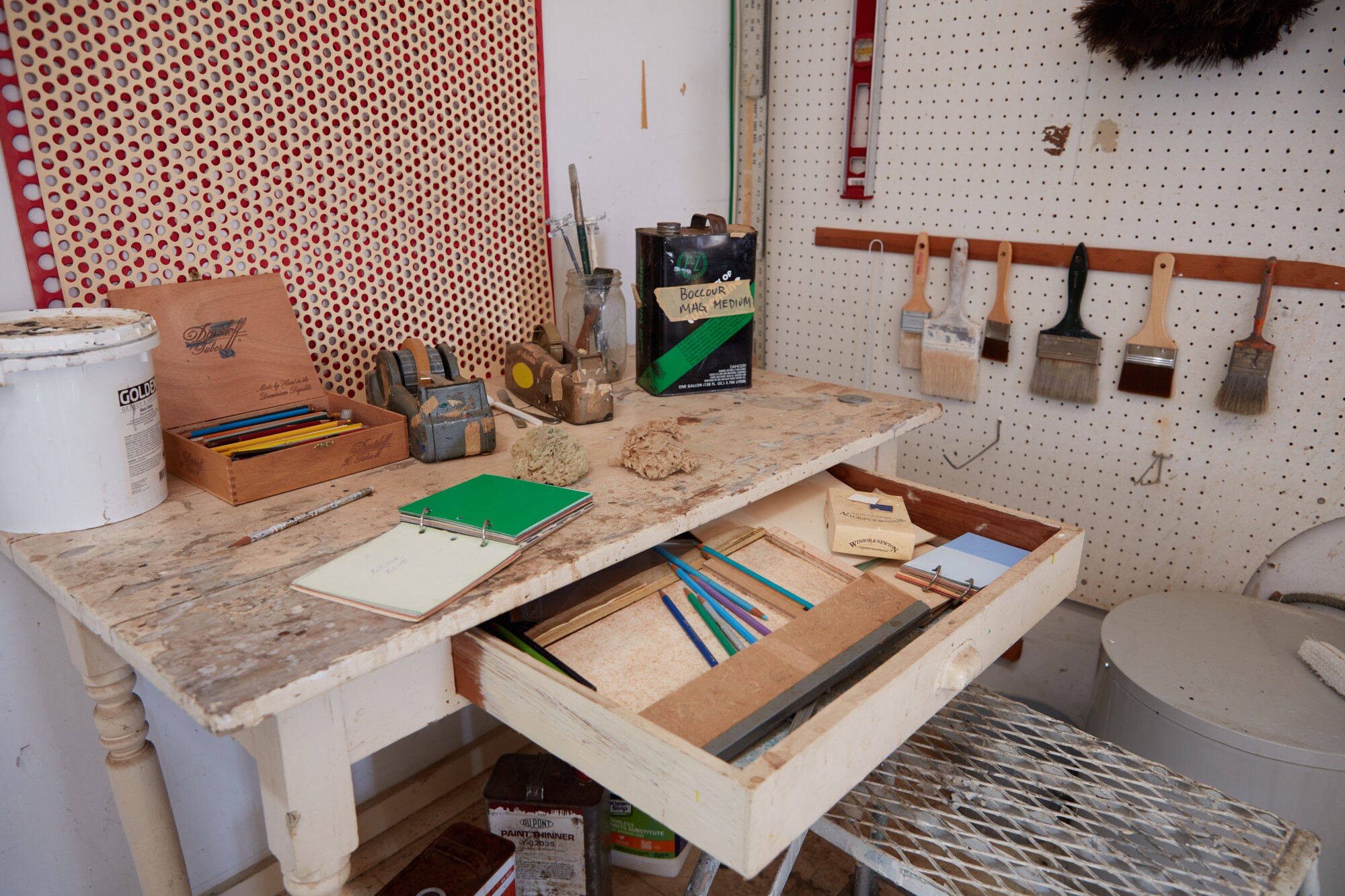“The ‘Nudes’ series represents Lichtenstein at his most sophisticated… The tension between high art traditions and commercial printing techniques reaches its apex in these works.”
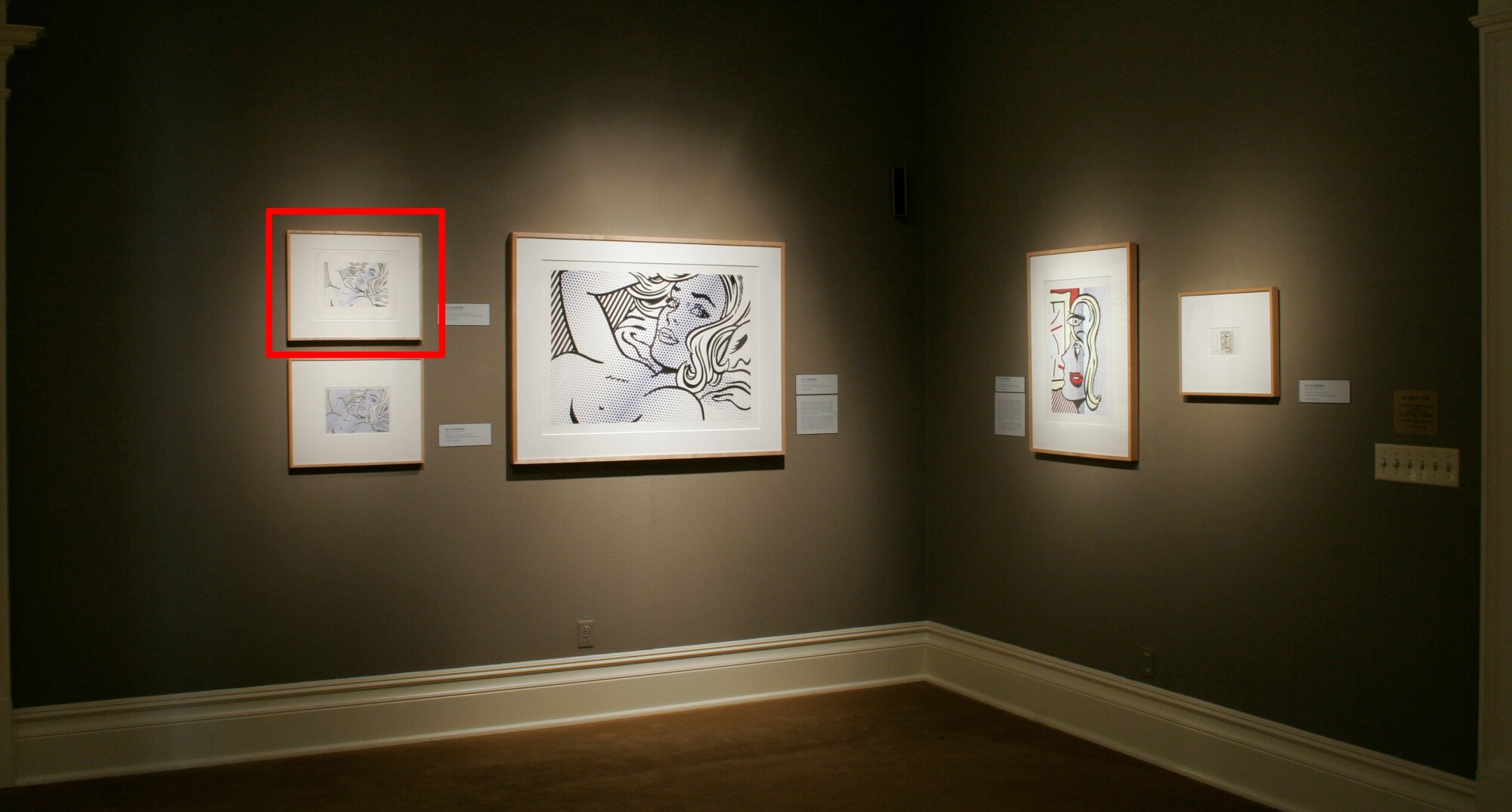
Roy Lichtenstein’s Seductive Girl (Study) offers an intimate and mesmerising glimpse into the artist’s late-career process as he revisited the comic-inspired heroines that first catapulted him to fame in the 1960s. Intimately scaled yet saturated with Lichtenstein’s trademark visual vocabulary, this beguiling figure exemplifies the artist’s fastidious approach to the process of production, here applied in a Pop tribute to art history's most enduring subject: the nude. Rendered in graphite and coloured pencil in 1996, this drawing serves as a significant precursor to the large-scale painting of the same name, a masterpiece from Lichtenstein’s celebrated late Nudes, the first series the artist undertook following his acclaimed retrospective in 1993 at the Guggenheim Museum and one of the primary subjects that would occupy him until his death in 1997. As one of the works retained by the artist and his wife Dorothy in their own collection, Seductive Girl (Study) presents a rare and captivating perspective into the central themes that weave through Lichtenstein’s creative legacy and the iconic style that has come to define him as one of the foremost titans of the twentieth century.
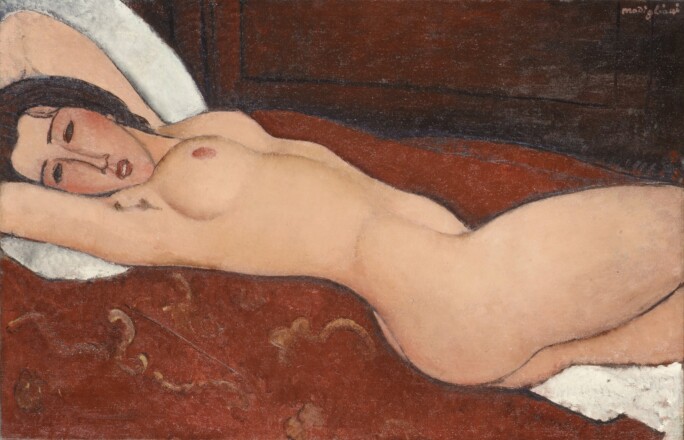
Gazing directly at the viewer, the alluring heroine fills the picture plane in a cinematic, Hitchcockian guise, her chest exposed and one arm stretched above her. The immediacy of the image is underscored by the rich figure-ground relationship achieved using vigorous strokes of blue pencil, concentrated along the figure’s centre line and tapering away, to imply the shadows cast by a wash of moonlight. In this way the composition echoes its comic-book source material: the original image, appropriated from the 1964 Heart Throbs comic “Love Me Not for Beauty Only,” frames a fashionable blonde alone in bed pining for her unrequited love under the text “Later that night, I couldn’t fall asleep.” The lovelorn subject is bathed in blue light to indicate the evening hour; in Lichtenstein’s translation, this device becomes highly abstracted – the colour blue is alien to human flesh, and the way the shading equates the figure’s body with the bedding underneath her while excluding her hair and wallpaper further problematises any security of image. These interventions by the Pop master remind the viewer that what we behold is merely a composition of marks upon a surface, a key theme of Lichtenstein’s entire oeuvre.
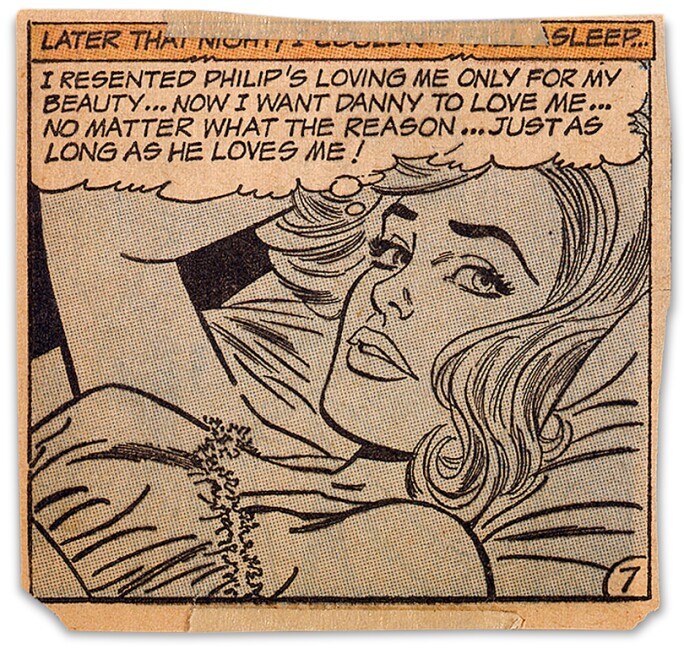
The present work also offers a rare glimpse into many of the formal processes that Lichtenstein undertook while creating suites of compositional studies that would seek to resolve questions of layout, colouring, and visual effect, laying the groundwork for compositional elements like his signature use of Ben-Day dots. While this study forgoes the dots, they emerge prominently in the later canvas, where the shaded areas are transformed into blue Ben-Day dots, following the same areas of light and dark. This evolution reflects a profound shift in Lichtenstein's artistic approach, as he reimagines the dots – not merely as elements drawn from comic book inspiration – but as a sophisticated means of achieving chiaroscuro. Describing the technique, Lichtenstein has noted, “It’s a little bit the way chiaroscuro isn’t just shadows but a way of combining the figure and background, or whatever’s near it in a dark area… You’re not confined to the object pattern, but the subject matter excuse for this is that it’s a shadow. And that’s interesting to me” (the artist quoted in Exh. Cat., London, Anthony d’Offay Gallery, Some Kind of Reality: Roy Lichtenstein Interviewed by David Sylvester in 1966 and 1997, 1997, p. 38). This interplay between the study and the finished work reveals his continual exploration of form and depth, showcasing the ways in which he adapted and refined his techniques in this later phase of his career.
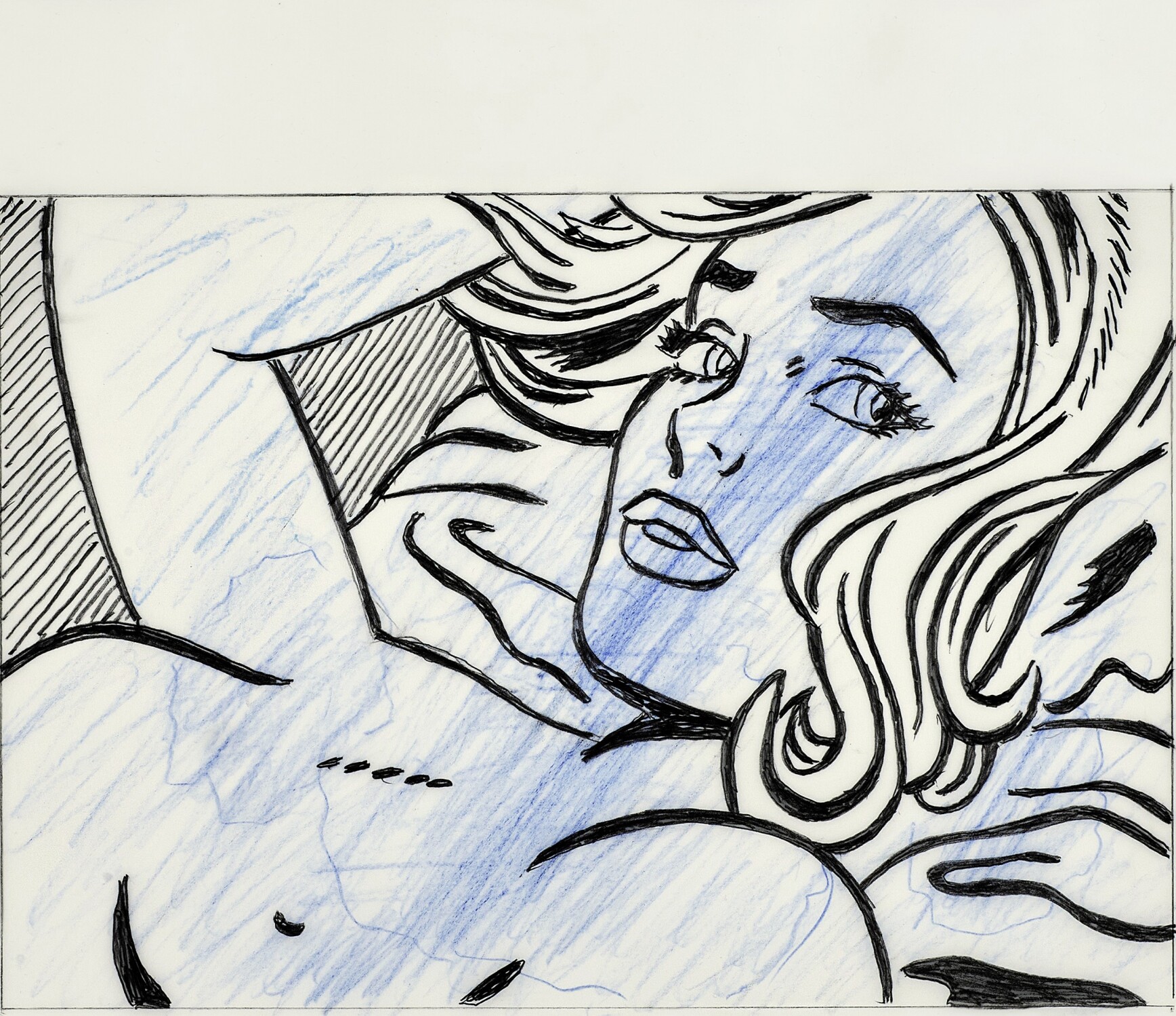
“Lichtenstein’s Nudes series, created in the last four years of his life, are a profoundly innovative and active meditation upon the relationship of creation and perception.”
In its structure, simplicity and close-up framing, the present composition is closely aligned with the format of Lichtenstein’s early Girl paintings of the 1960s, including the 1964 canvas sharing the same title. However, whereas Lichtenstein’s paintings of women in the 1960s relied heavily upon melodramatic and romantic scenes of damsels in distress, his 1990s Nudes depict women of an entirely new generation, exuding a quiet, self-assured confidence that is unconcerned by the voyeuristic gaze brought upon by the viewer. As critic Avis Berman remarks, "The 1990s Nudes take pleasure in their own company, without the slightest hint of needing or missing a man. They are not paralyzed by their emotions. In contrast to Lichtenstein's original romance-comic pictures, this world flourishes exuberantly without men or engagement rings or kisses. The older norm didn't disappear, but needed to be adjusted " (Exh. Cat., Vienna, Kunsthaus Bregenz, Roy Lichtenstein: Classic of the New, 2005, p. 143). The series’ joyous sensuality has attracted many long-standing admirers, including the artist Jeff Koons, who once declared, “The later women paintings and nudes that Roy did are absolutely gorgeous” (Jeff Koons in Exh. Cat., New York, Gagosian Gallery, Lichtenstein: Girls, New York 2008, p. 16).
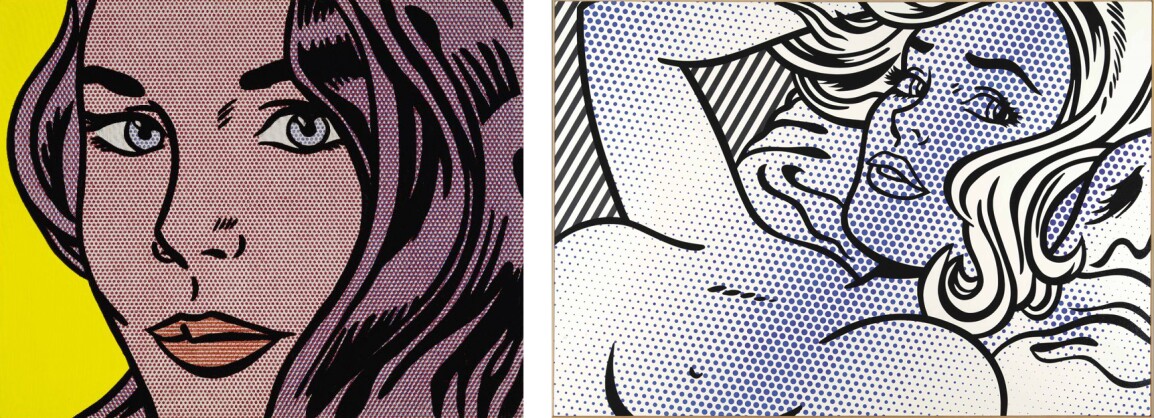
Right: Roy Lichtenstein, Seductive Girl, 1996. Private Collection. Sold New York, November 2013, for $31.5 million. © Estate of Roy Lichtenstein/DACS 2025
Seductive Girl (Study) ultimately serves as a pivotal work within Lichtenstein's oeuvre, encapsulating the themes of femininity, identity, and the complexities of visual representation. In its economy of line, compositional clarity, and psychological nuance, it encapsulates the essence of his late style: confident, formally rigorous, and unmistakably his own. As a study, it offers a glimpse into the artist's creative process, revealing the layers of thought that underpin his final compositions. This drawing stands as a celebration of Lichtenstein's legacy, reflecting his enduring influence on contemporary art and the ongoing dialogue surrounding the representation of the female figure in the modern era.
